Abstract
Rates of methane consumption were measured in subarctic coniferous and temperate mixed-hardwood forest soils, using static chambers and intact soil cores. Rates at both sites were generally between 1 and 3 mg of CH4 m-2 day-1 and decreased with increasing soil water contents above 20%. Addition of ammonium (1 μmol g of soil-1) strongly inhibited methane oxidation in the subarctic soils; a lesser inhibition was observed for temperate forest samples. The response to nitrogen additions occurred within a few hours and was probably due to physiological changes in the active methane-consuming populations. Methane consumption in soils from both sites was stratified vertically, with a pronounced subsurface maximum. This maximum was coincident with low levels of both nitrate and ammonium in the mixed-hardwood forest soil.
Full text
PDF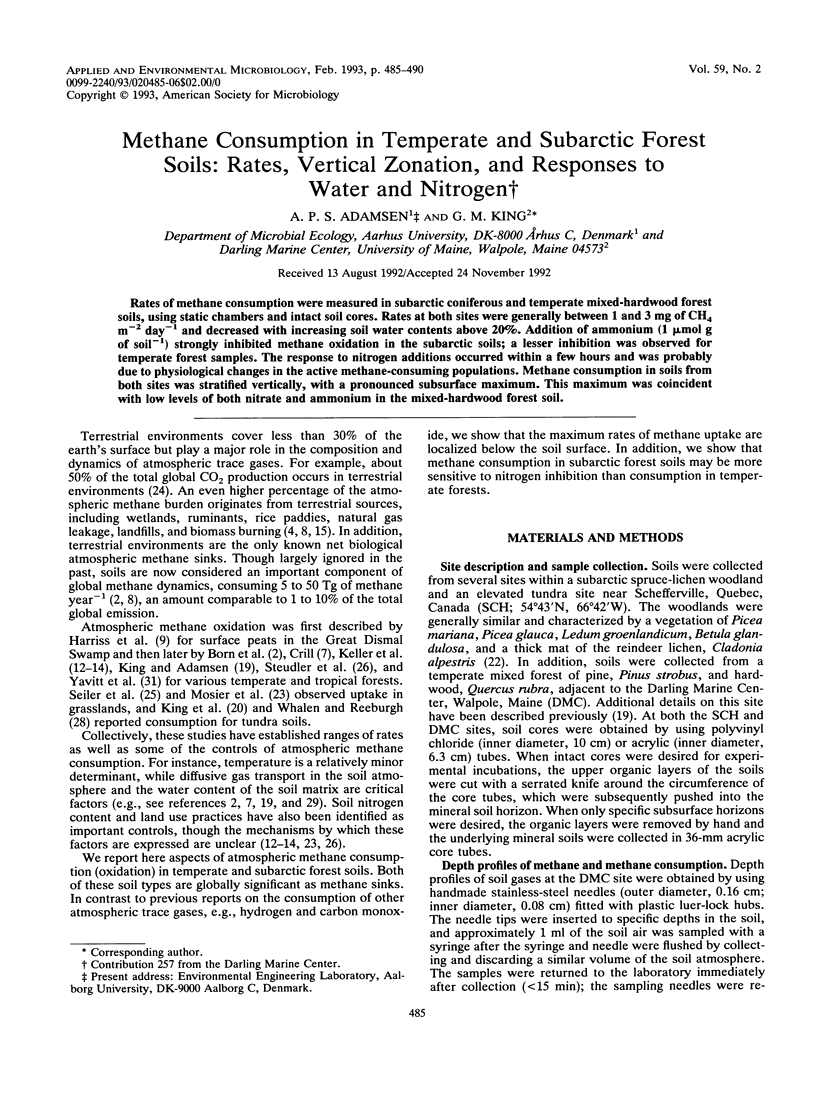
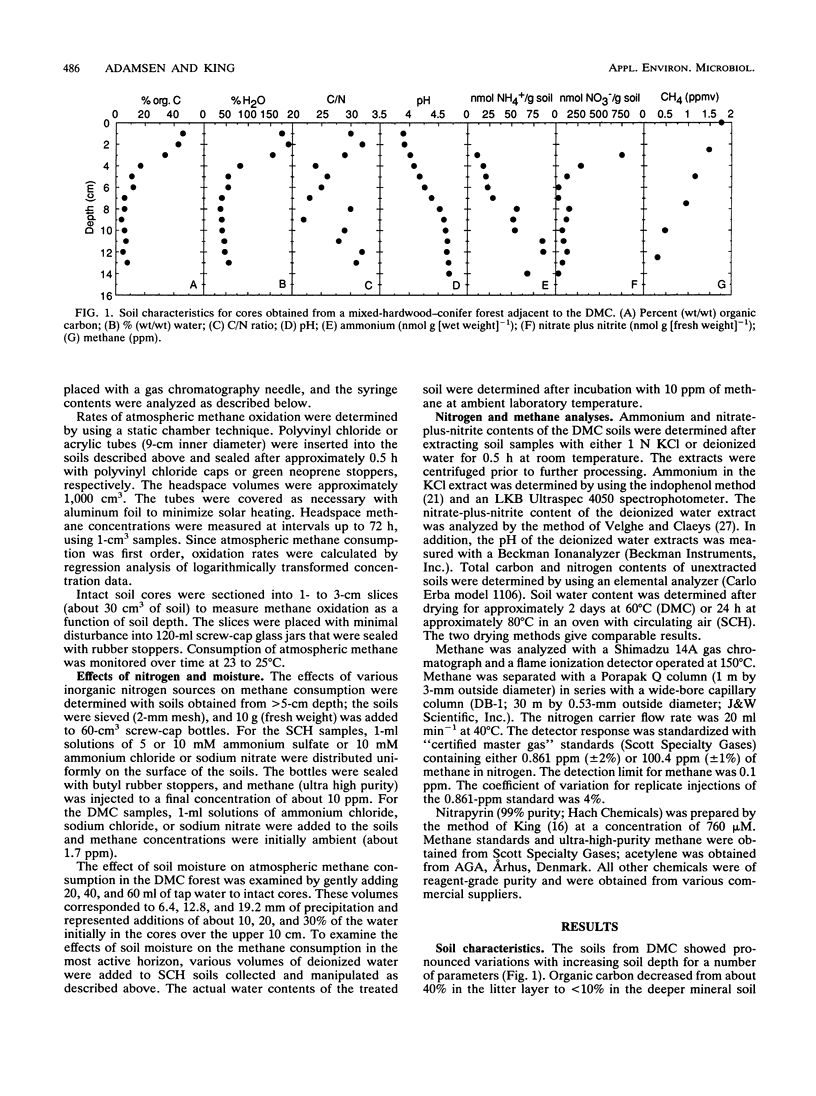
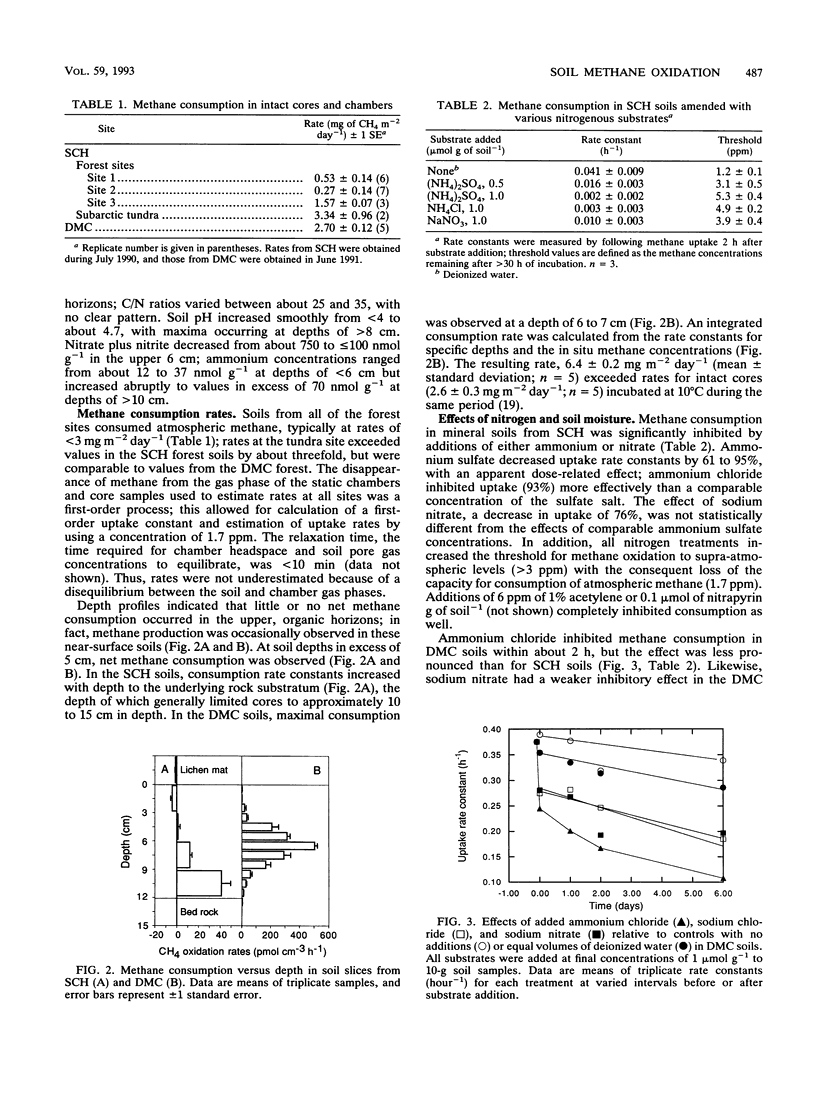
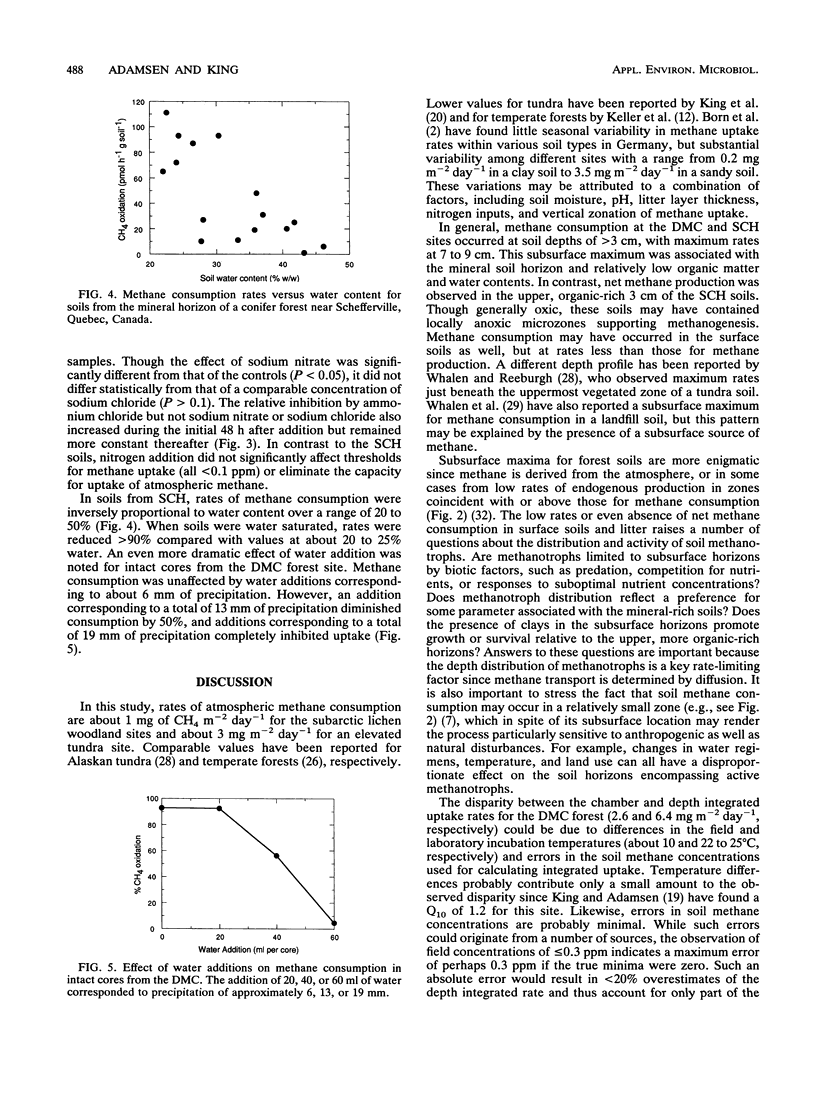
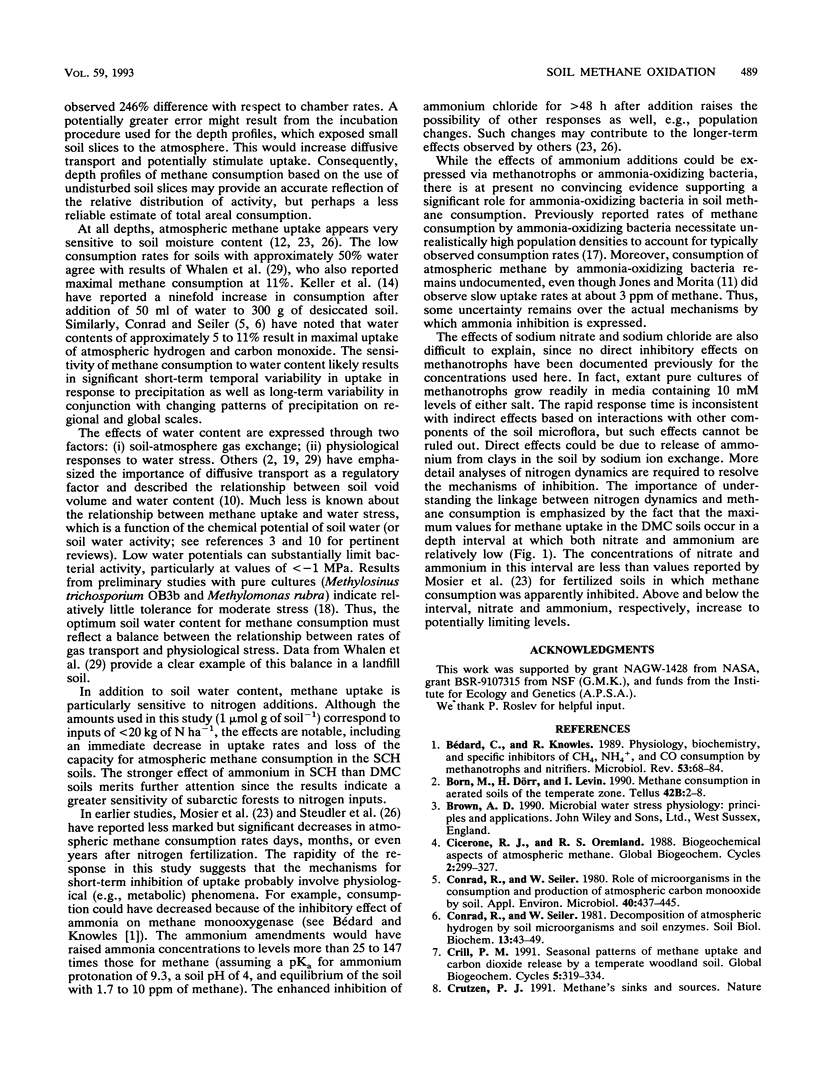
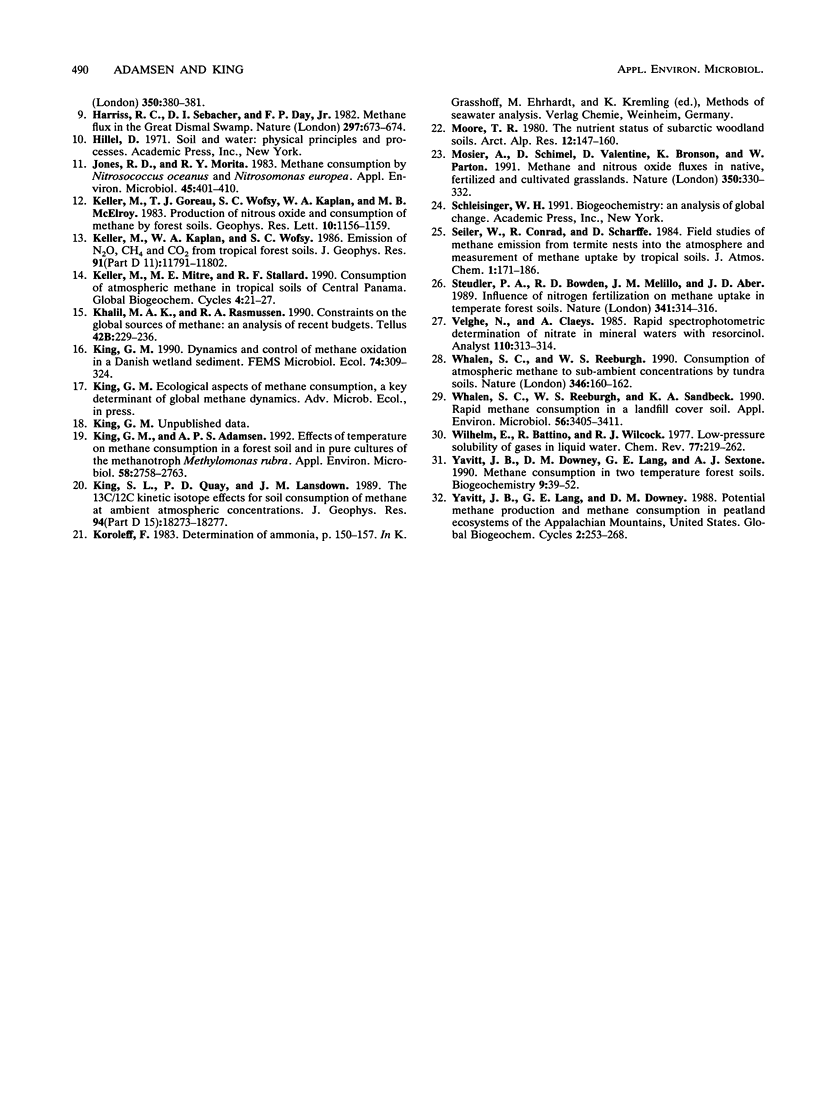
Selected References
These references are in PubMed. This may not be the complete list of references from this article.
- Bédard C., Knowles R. Physiology, biochemistry, and specific inhibitors of CH4, NH4+, and CO oxidation by methanotrophs and nitrifiers. Microbiol Rev. 1989 Mar;53(1):68–84. doi: 10.1128/mr.53.1.68-84.1989. [DOI] [PMC free article] [PubMed] [Google Scholar]
- Conrad R., Seiler W. Role of microorganisms in the consumption and production of atmospheric carbon monoxide by soil. Appl Environ Microbiol. 1980 Sep;40(3):437–445. doi: 10.1128/aem.40.3.437-445.1980. [DOI] [PMC free article] [PubMed] [Google Scholar]
- Jones R. D., Morita R. Y. Methane Oxidation by Nitrosococcus oceanus and Nitrosomonas europaea. Appl Environ Microbiol. 1983 Feb;45(2):401–410. doi: 10.1128/aem.45.2.401-410.1983. [DOI] [PMC free article] [PubMed] [Google Scholar]
- King G. M., Adamsen A. P. Effects of Temperature on Methane Consumption in a Forest Soil and in Pure Cultures of the Methanotroph Methylomonas rubra. Appl Environ Microbiol. 1992 Sep;58(9):2758–2763. doi: 10.1128/aem.58.9.2758-2763.1992. [DOI] [PMC free article] [PubMed] [Google Scholar]
- Whalen S. C., Reeburgh W. S., Sandbeck K. A. Rapid methane oxidation in a landfill cover soil. Appl Environ Microbiol. 1990 Nov;56(11):3405–3411. doi: 10.1128/aem.56.11.3405-3411.1990. [DOI] [PMC free article] [PubMed] [Google Scholar]


